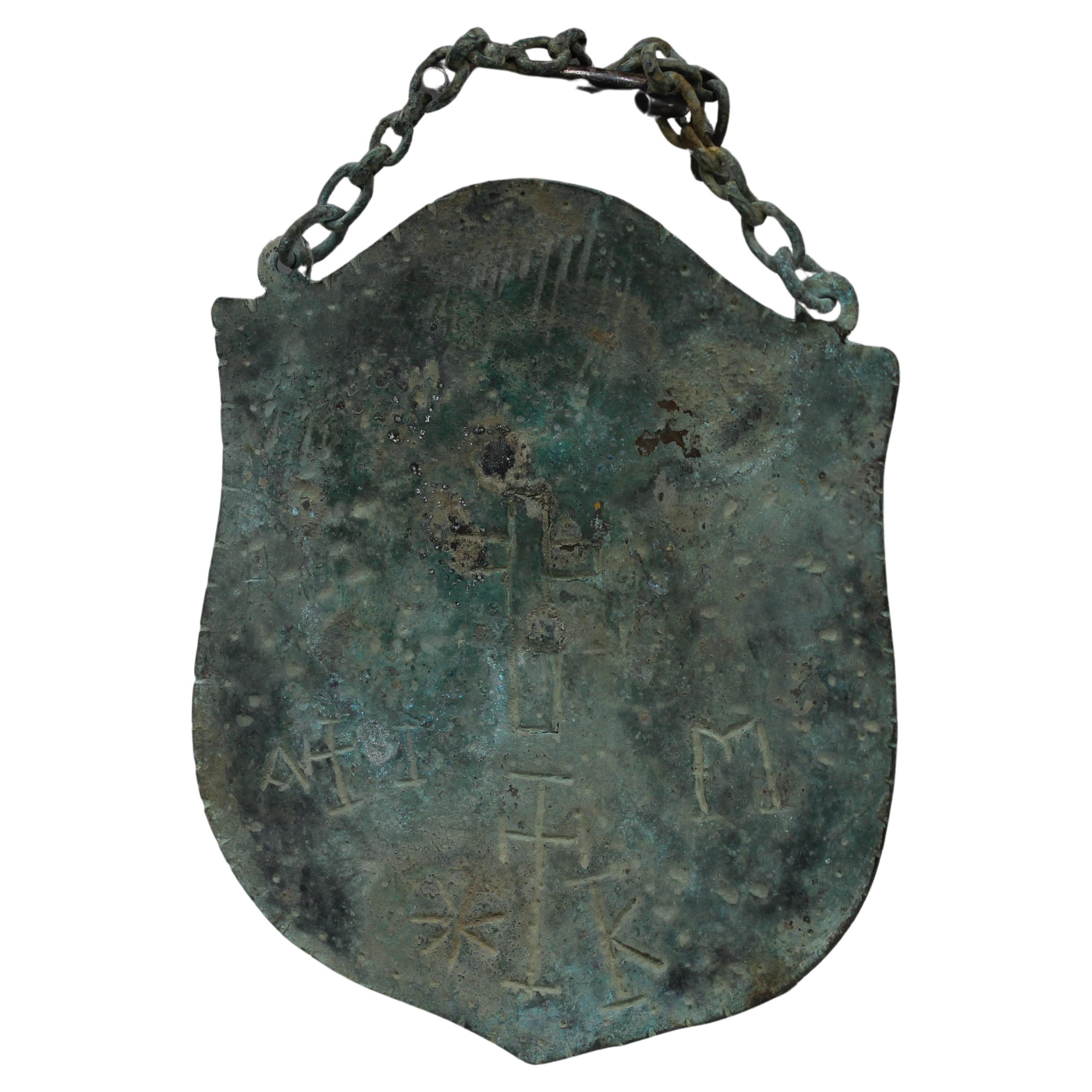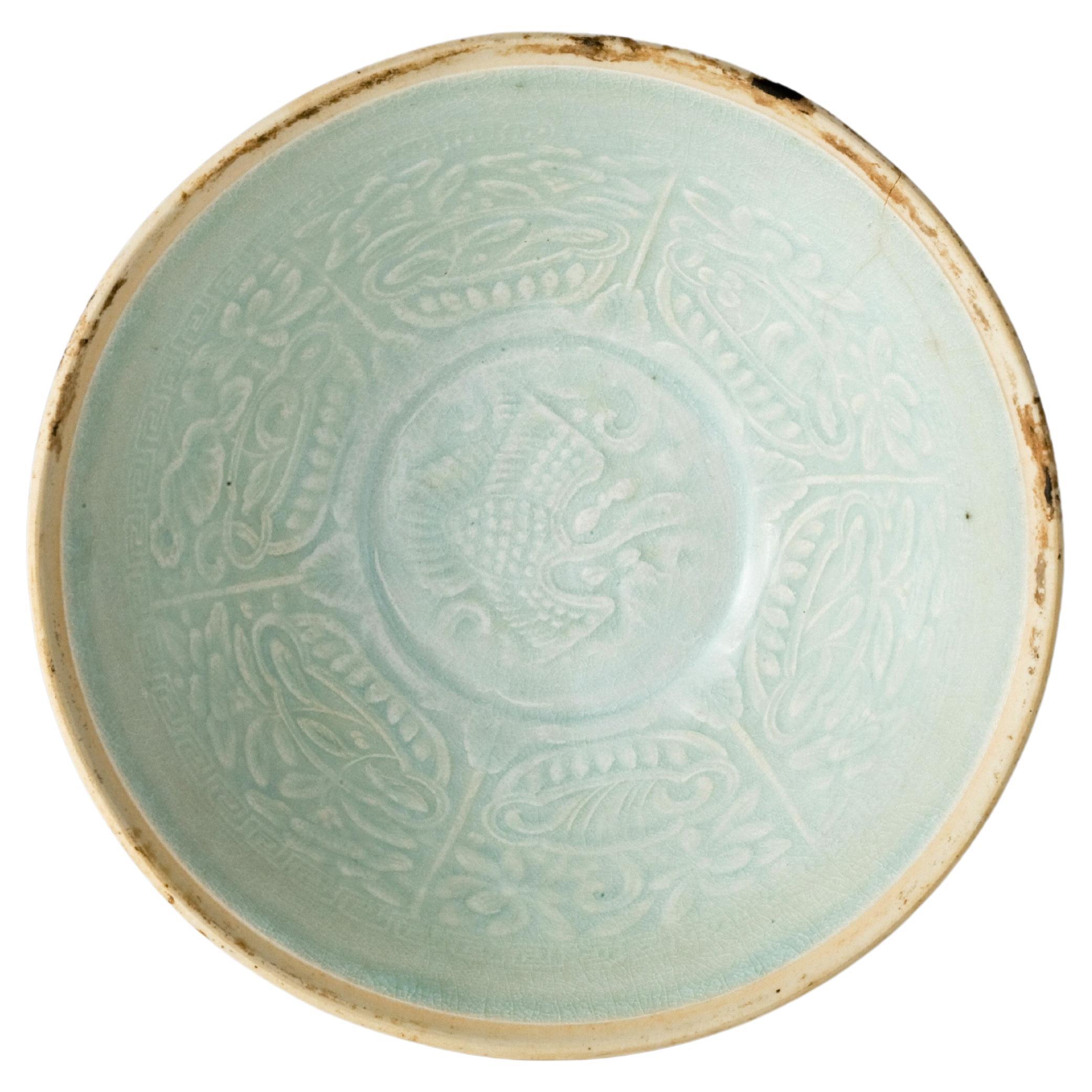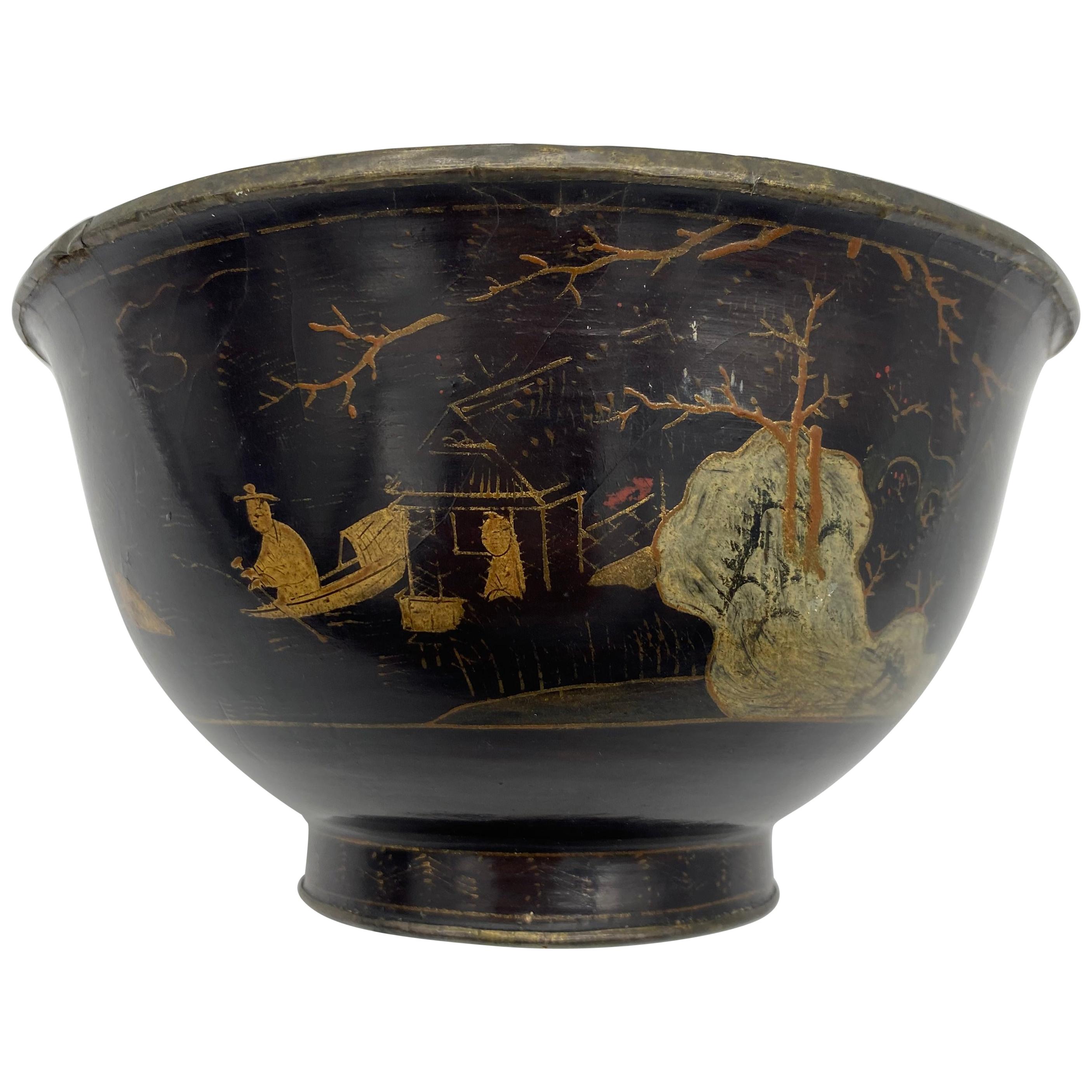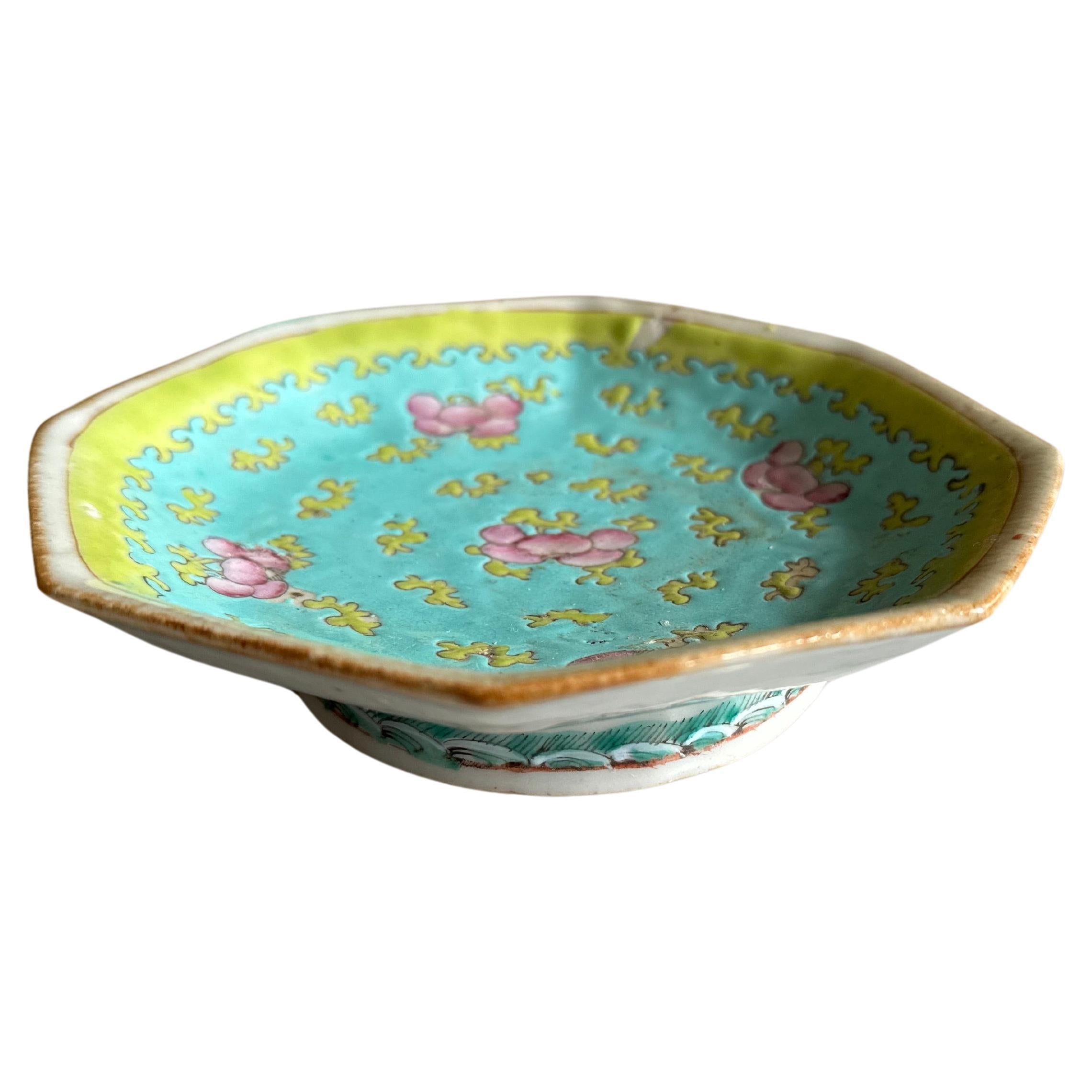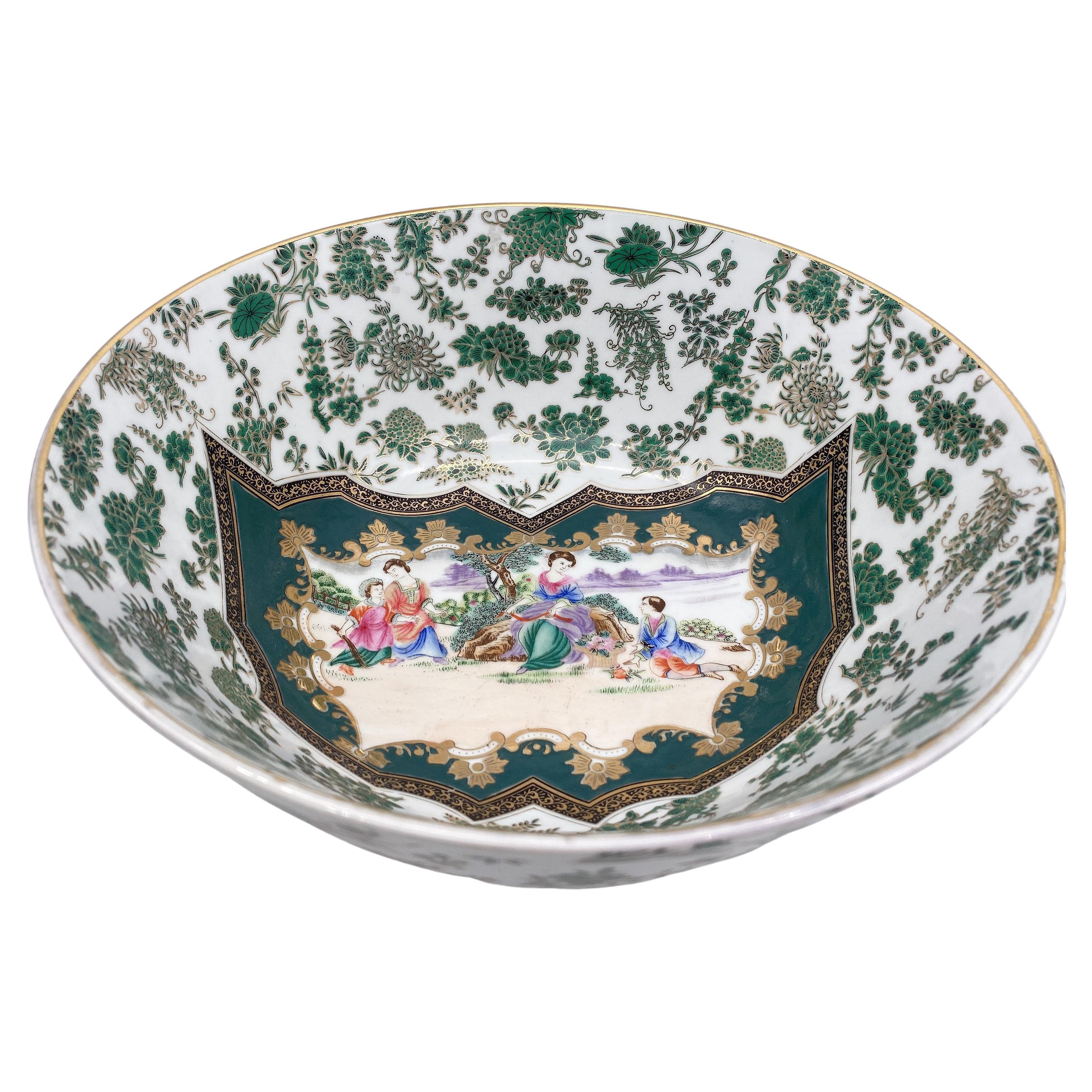Items Similar to Bowl with Kufic Inscription
Want more images or videos?
Request additional images or videos from the seller
Bowl with Kufic Inscription
About the Item
Glazed ceramic bowl with a convex wall and everted rim. With a cobalt blue inscription in the centre which reads, “baraka li-sahibihi” (blessing to its owner).
Ceramics such as this bowl are among the first examples to incorporate calligraphy as the main element of decoration. The Abbasid potters of the ninth century attempted to emulate the luminous quality and hard body of Chinese whitewares by using a tin-opacified white glaze, however, the use of cobalt blue is a novel departure that was to have a profound and long-lasting influence on world ceramics. The application of cobalt directly into the raw glaze creates a soft impression, described by Arthur Lane as "like ink on snow".
Exhibition:
Persepolis Gallery, Brussels 28th October – 13th November 1971.
Provenance:
Private Collection of Monsieur H., Brussels, acquired pre-1971, accompanied by an old inventory list with the bowl listed as no. 328, matching the collection label on the base.
Thence by descent to his daughter, Madame D. T.
With IADAA certificate, this item has been searched against the Interpol database.
- Dimensions:Height: 1.97 in (5 cm)Diameter: 7.88 in (20 cm)
- Materials and Techniques:
- Period:
- Date of Manufacture:9th Century
- Condition:Repaired: With fractures and restorations. Wear consistent with age and use. With an old typed collection label ‘328’ on the base.
- Seller Location:London, GB
- Reference Number:1stDibs: LU5517232895452
About the Seller
5.0
Vetted Seller
These experienced sellers undergo a comprehensive evaluation by our team of in-house experts.
Established in 1910
1stDibs seller since 2020
- ShippingRetrieving quote...Ships From: London, United Kingdom
- Return PolicyA return for this item may be initiated within 14 days of delivery.
More From This SellerView All
- Epitaph for Quirinia FeliciaLocated in London, GBA rectangular marble slab carved with the Latin inscription ‘QVIRINIAE C(retr.) L / FELICLAE / OLLAM DAT / C VALERIVS PYLODAMVS’, which translates as ‘Gaius Valerius Pylodamus gave t...Category
Antique 15th Century and Earlier European Classical Roman Antiquities
MaterialsBronze
- Ancient Marble Portrait Bust of a Bearded Man possibly Lucius VerusLocated in London, GBThis impressive bust is depicted with head turned slightly to the right and gaze lifted. His eyes are articulated, with the pupils indicated with a drill, giving the face a striking realism. The shoulders are draped with a cloak. Straight brows sit beneath a mass of thickly curling hair, which continues to a full beard. It is worked with great skill, evident in the heavy drill work articulating and highlighting the voluminous curls, and the highly polished surfaces, giving the appearance of soft skin. The contrast between these textures gives a chiaroscuro affect which is one of the main traits of the best Antonine busts. Roman marble portraits reached their apotheosis of craftmanship and technique under the Antonine emperors, as is evidenced in this masterful bust. The evolution of the style may be traced back to the emperor Hadrian, who was the first emperor to wear a full beard. The articulation of pupils and iris appears on busts of his lover Antinous, a novelty which continued in later Antonine portraits, such as this one. The features of this bust point to a possible identification of Emperor Lucius Verus...Category
Antique 15th Century and Earlier Antiquities
MaterialsMarble
- Two Glass Inlay PairsLocated in London, GBTwo pairs of two halves from the same bar, finely detailed, with pointed ears and eyebrows, opaque yellow face, opaque red on the mouth, nose, eyes and ears, translucent cobalt blue edges to the mouth, nose and ears, with translucent emerald green leaves above and between the translucent cobalt blue brows and eye line, translucent pink pupils, with translucent cobalt blie and opaque white snake scales below the face, in translucent cobalt blue matrix, cut in the lower part of a cartouche design. These rare heads might represent the Agathos Daimon, the tutelary deity of Alexandria, who was also identified with Serapis, the male counterpart of Isis-Thermouthis (who in turn was a graecisized form of the early snake harvest goddess Renenutet). In a statue of Isis-Thermouthis in Alexandria museum (no. 25773, ex-collection King Farouk I), reproduced in Gotten, Pharaonen, no. 151, the snake goddess...Category
Antique 15th Century and Earlier Egyptian Antiquities
MaterialsGlass
- 'Bellon' VaseLocated in London, GBA baluster-shaped ceramic vase with siliceous paste painted in manganese and cobalt, under a transparent glaze. With hand painted blue and white decorations. Stone paste or ‘fritware’ vessels with lustre, turquoise, white and cobalt blue glazes were famously crafted in the northern Syrian city of Raqqa, situated on the Euphrates River. They were often utilitarian in design, but elegant and intricate in decoration. This present example was most likely used as a storage vessel. Like many transportable ceramics in the region, it is possible this piece was exported out of the city, either to be traded or as a container for more expensive goods. Published Collection H Hoffmann...Category
Antique 15th Century and Earlier Antiquities
MaterialsCeramic
- Anglo-Saxon Hanging BowlLocated in London, GBA very rare and near-complete copper-alloy hanging bowl and associated fittings. Crafted from a single sheet of bronze, the body of the bowl is curved, with a slightly recessed lip. ...Category
Antique 15th Century and Earlier English Antiquities
MaterialsBronze
- Edmontosaurus SkullLocated in London, GBAn impressive skull of an Edmontosaurus, a large herbivorous dinosaur that lived during the Late Cretaceous period, 68-66 million years ago. The three rows of sixty or more teeth on either side of the jaw, known as the ‘dental battery’, mark the Edmontosaurus as part of the Hadrosauridae, or duckbill family of dinosaurs. It belongs to the flat-skulled, or solid-crested, Hadrosaurinae, which replaced the older hollow-crested hadrosaurs. Edmontosaurus was one of the last non-avian dinosaurs to ever exist, living shortly before the Cretaceous-Paleogene extinction event. The Edmontosaurus was named in 1917 by Lawrence Lambe, after a partial specimen from Edmonton in Alberta, Canada. The existence of large Edmontosaur bone beds...Category
Antique 15th Century and Earlier American Natural Specimens
MaterialsBone
You May Also Like
- Byzantine pilgrims badge / plaque with incised cross and inscriptionLocated in EL CAMPELLO, ESITEM: Pilgrims badge / Plaque with incised cross and inscription with original suspension chain MATERIAL: Bronze CULTURE: Byzantine PERIOD: 5th – 8th Century A.D DIMENSIONS: 95 mm x ...Category
Antique 15th Century and Earlier Unknown Medieval Antiquities
MaterialsBronze
- Qingbai Bowl with carving of crane, Song DynastyLocated in seoul, KRThe crane, a traditional symbol of longevity and auspiciousness, is prominently placed at the center, creating a harmonious and aesthetically balanced effect. The border of the dish ...Category
Antique 15th Century and Earlier Chinese Chinese Export Antiquities
MaterialsPorcelain
- Turquoise Cloisonné Bowl with Jade Cover-China, c. 1920Located in West Palm Beach, FLChinese cloisonné bowl with jade cover. The ground color of the bowl, inside and out, is a deep turquoise. The exterior decoration is of pink, red and blue flowers and their leaves i...Category
Vintage 1910s Chinese Chinoiserie Antiquities
MaterialsBrass, Enamel
- 18th Century Chinese Lacquer Bowl with PewterLocated in Brea, CAChinese lacquer bowl of deep flared form with pewter from the 18th century. Over a body of black lacquered the exterior decorated with gilt scenes o...Category
Antique 18th Century Chinese Qing Lacquer
MaterialsLacquer
- Chinese standing bowl, turquoise with peaches, late Qing DynastyLocated in Hamburg, DEPresenting a magnificent piece of Chinese craftsmanship, this Turquoise Bowl hails from the late Qing Dynasty. This rectangular-shaped beauty is a testament to the artistry and atten...Category
Antique Late 19th Century Chinese Qing Antiquities
MaterialsPorcelain
- Antique Chinese Famille Rose Porcelain Large Bowl with Colour EmamelsLocated in Brea, CAan antique important fine gold Chinese famille rose porcelain 12'' bowl with very beautiful colour enamels, hand painted, mark DaQingQianLongNianZhi, excellent condition, Measures: 1...Category
20th Century Chinese Chinese Export Antiquities
MaterialsPorcelain
